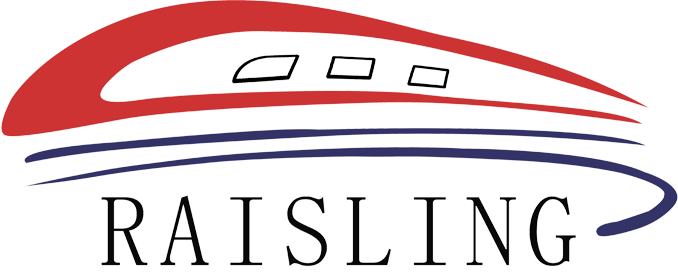Top Benefits of Using High-Quality Fishplates in Transportation
Oct 07,2025
Top Benefits of Using High-Quality Fishplates in Transportation Introduction to Fishplates in Transportation Fishplates, also known as rail joints, play a critical role in the stability and safety of railway tracks. These integral components connect two sections of rail, ensuring that trains can travel smoothly and safely across various terrains. The significance of utilizing high-quality fishplat

Top Benefits of Using High-Quality Fishplates in Transportation
Introduction to Fishplates in Transportation
Fishplates, also known as rail joints, play a critical role in the stability and safety of railway tracks. These integral components connect two sections of rail, ensuring that trains can travel smoothly and safely across various terrains. The significance of utilizing high-quality fishplates cannot be overstated; they are pivotal in maintaining the integrity of rail systems and enhancing overall transportation efficiency.
Understanding the Importance of High-Quality Fishplates
When we discuss high-quality fishplates, we refer to those made from durable materials and designed to withstand the stresses of heavy loads and varying weather conditions. Using top-notch fishplates minimizes the risk of track failure, which can lead to catastrophic accidents and costly repairs. As the backbone of rail infrastructure, investing in high-quality options ensures a reliable and safe transportation network.
Benefits of High-Quality Fishplates
1. Enhanced Safety Standards
Safety is paramount in any transportation system, particularly in railways where the stakes are high. High-quality fishplates significantly reduce the risk of derailments caused by track misalignments. By providing secure and stable connections between rail sections, these fishplates ensure that trains operate within safe parameters, ultimately protecting passengers and cargo alike.
2. Improved Durability and Longevity
Quality materials such as high-strength steel or corrosion-resistant alloys used in manufacturing fishplates contribute to their durability. These materials can withstand extreme weather conditions, heavy loads, and constant vibrations from passing trains. As a result, high-quality fishplates have a longer lifespan, reducing the need for frequent replacements and associated maintenance costs.
3. Cost-Effectiveness Over Time
While high-quality fishplates may require a higher initial investment, they prove to be more cost-effective in the long run. Their durability translates to fewer replacements and less maintenance, justifying the upfront costs. Moreover, a well-maintained rail system can operate more efficiently, ultimately leading to reduced operational costs for transportation companies.
4. Enhanced Performance and Efficiency
High-quality fishplates contribute to smoother train operations by minimizing track irregularities. This enhanced performance not only improves the ride quality for passengers but also ensures that freight deliveries are punctual and reliable. As efficiency increases, so does the overall productivity of transportation networks.
5. Resistance to Environmental Factors
Railway systems are constantly exposed to various environmental factors, including moisture, temperature fluctuations, and corrosive agents. High-quality fishplates are designed to resist these elements, mitigating the risk of damage from rust and corrosion. This resilience ensures that the fishplates maintain their structural integrity and functionality over time, even in challenging environments.
6. Compatibility with Advanced Technologies
The evolution of rail systems introduces advanced monitoring and maintenance technologies. High-quality fishplates are often designed with compatibility in mind, allowing for seamless integration with these technologies. This compatibility enables real-time monitoring, which can detect potential issues before they escalate into significant problems, thereby enhancing overall safety and efficiency.
7. Reduction in Vibration and Noise
Vibration and noise are common issues in railway systems that can lead to passenger discomfort and structural wear over time. High-quality fishplates help reduce these effects by providing a stable connection between rails. This not only enhances the travel experience for passengers but also minimizes wear and tear on the rail infrastructure.
8. Improved Resale Value of Rail Assets
For companies involved in rail transportation, the quality of infrastructure components plays a significant role in asset valuation. High-quality fishplates contribute to the overall perceived value of railway assets. Should a company decide to sell or lease its rail assets, the presence of durable, high-quality components can lead to better financial returns.
Key Considerations When Selecting Fishplates
Choosing the right fishplates for a railway system involves more than just selecting the most expensive option. Here are several key considerations to keep in mind:
Material Quality
The material used in manufacturing fishplates is paramount. Look for options made of high-strength steel or other durable alloys that can withstand heavy loads and environmental challenges.
Design and Engineering
The design of fishplates should complement the specific requirements of the railway system. Considerations include track gauges, expected loads, and environmental considerations.
Manufacturer Reputation
Opt for fishplates from reputable manufacturers known for producing high-quality railway components. Researching reviews and industry feedback can provide insights into the performance and reliability of specific products.
Cost vs. Value
While it may be tempting to select lower-cost options, evaluate the long-term value of high-quality fishplates. The initial investment may be higher, but the benefits they provide can far outweigh the savings from cheaper alternatives.
Compliance with Standards
Ensure that the fishplates comply with national and international safety standards. This compliance is crucial for ensuring that they can perform effectively and safely in your transportation network.
Conclusion
The benefits of utilizing high-quality fishplates in transportation, especially in railway systems, cannot be overlooked. From enhanced safety and durability to improved operational efficiency and cost-effectiveness, these components serve as the backbone of reliable rail infrastructure. Investing in high-quality fishplates not only ensures a safer travel experience but also promotes the longevity and efficiency of the entire transportation network. By prioritizing quality over cost, transportation companies can foster a safer, more efficient, and more reliable rail system for the future.
FAQs
1. What are fishplates used for in transportation?
Fishplates are used to connect two sections of rail, ensuring stability and safety for train operations.
2. How do high-quality fishplates enhance safety?
High-quality fishplates minimize track misalignments, reducing the risk of derailments and ensuring safe train movement.
3. Are high-quality fishplates worth the investment?
Yes, while they may have a higher upfront cost, their durability and reduced maintenance needs make them cost-effective in the long run.
4. What materials are best for fishplates?
High-strength steel and corrosion-resistant alloys are the best materials for manufacturing durable fishplates.
5. How do fishplates affect train performance?
High-quality fishplates contribute to smoother operations, enhancing ride quality and ensuring punctual freight deliveries.
Previous:
Recommended
Henan Xinda Railway Equipment Co., Ltd. participated in the Russian International Railway and Rail Transit Exhibition
Delegation of International Rail Experts Tours Henan Xinda's Railway Fastener Manufacturing Facility
Henan Xinda hosts foreign delegates for a factory tour of its railway fastener production plant. See how we ensure quality in manufacturing rail clips, fish plates, and fasteners for global rail infrastructure. CRCC certified. Get a quote.
Contact Us








